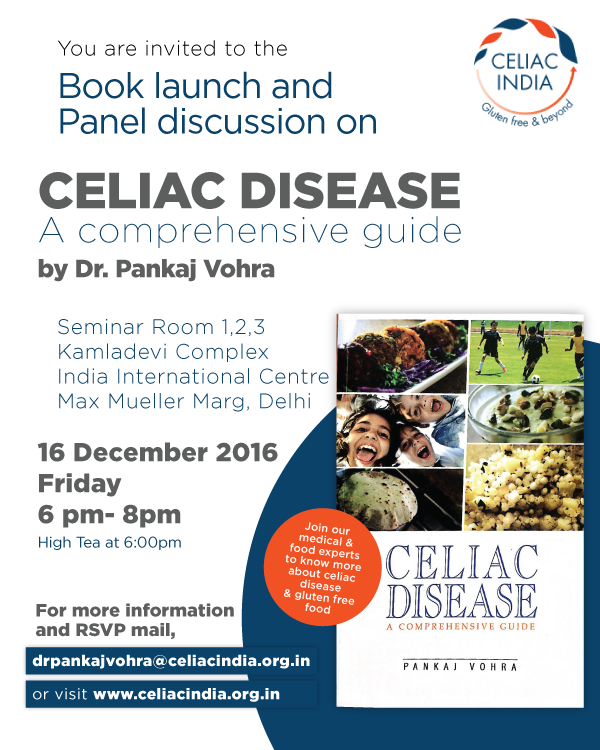Patient histories
Few patient histories have been presented here to help you understand more about the many manifestations of celiac disease.
CHILDREN
Abdominal pain
1. A 4 year old boy presented with recurrent crampy abdominal pain. Ultrasound revealed multiple small bowel intussusceptions (one part of the intestine telescoping into the other). A previous ultrasound examination had shown the same findings 6 weeks ago. The abdomen was soft and no lumps were palpable.
2. An 8 year old girl had been taken to several doctors for recurring central abdominal pain near the umbilicus. Initially it was considered to be functional abdominal pain – the most common cause of recurrent central abdominal pain in children. However, with worsening pain which would wake the child up at night, she was initially given empiric anti- acid medications, anti giardia medication and treatment for constipation and then investigated for possible celiac disease.
Recurrent non bloody diarrhea: A 4 year old boy presented with recurrent non bloody diarrhea that responded temporarily to broad spectrum antibiotics and anti-amoebic drugs. There was no history of prolonged fever. Abdominal distension (bloating) and foul-smelling stools were prominent. Several stool examinations in the past had revealed only occasional pus cells. No response was noted with a milk free diet. His clinical examination revealed growth failure, anemia, cuts on the angles of the mouth (angular cheilitis) and gaseous abdominal distension.
Anemia: A 6 year old child presented with anemia. She had received three blood transfusions in the past 3 years. Thalassemia was ruled out before the second transfusion and iron deficiency anemia was confirmed. She had received anti-tubercular therapy with no real proof for the same and no improvement had been noted with the medications. On examination, she appeared pale but the rest of the physical examination was normal.
Chronic constipation: A 7 year old boy presented with severe chronic constipation symptoms that were non-responsive to standard therapy and no surgical cause was evident. On evaluation, he was found to have a positive celiac serology.
IgA deficiency and diarrhea: Four years ago, a 10 year old girl with recurrent non-bloody diarrhea was investigated for celiac disease by serology and was found to be negative. No further investigations were carried out but she now presented with failure to thrive and anemia in addition to ongoing diarrhea. She was re-investigated and found to have low serum IgA level and negative celiac serology. Her duodenal biopsy confirmed celiac disease.
Delayed puberty: A 17 year old girl presented for the first time with delayed puberty and short stature. Her mother and elder sister attained menarche at age 12 and 11 years, respectively. She was investigated for delayed puberty and also found to have nutritional anemia. Her serum IgA level was normal but her celiac serology was negative. However due to suspicion, she underwent an upper gastrointestinal endoscopy and biopsy which confirmed celiac disease.
Hypotonia (Loss of muscle tone and power): A 14 year old boy with occasional diarrhea presented with weakness and hypotonia. Investigations revealed severe hypokalemia (low serum potassium level). Further work up, including the celiac serology, was carried out to investigate the same.
Failure to thrive: An 8 year old girl who had been in regular follow up since birth and had been doing well till about one year ago when she started to show reduced rate of weight and height gain. When plotted on a growth chart, her weight and height were no longer in the same percentiles as before. She was investigated for failure to thrive and her tTG antibody was positive. Biopsy confirmed the diagnosis.
Short stature: An 11 year old boy was being evaluated for short stature. He was doing well in his school and sports. His general physical and all other organ examinations were normal except for short stature.
Type 1 diabetes: A 4 year old boy was recently diagnosed to have Type 1 diabetes mellitus. He had no apparent gastrointestinal symptoms. On routine screening, he was found to have a positive celiac serology.
ADULTS
Iron deficiency anemia: A 42 year old lady was found to have iron deficiency anemia. No site of blood loss could be ascertained. She responded well to iron supplementation and was also given de-worming medication. 3 months after completing the iron course, she was found to have developed iron deficiency anemia again.
Obesity and mouth ulcers: A 23 year old obese girl was constantly bothered by recurrent aphthous (small round to oval painful ulcers in the mouth) ulcers. She had tried and failed standard therapy and then went to a dentist who suggested that celiac disease needed to be ruled out.
Liver disease: A 36 year old man was constantly fatigued and was finding his stomach swollen. Investigations revealed that he had developed ascites (fluid in the abdomen) due to chronic liver disease. The usual causes of the chronic liver disease did not reveal any etiology except his celiac serology which was positive and intestinal biopsy confirmed it.
Easy fractures: A 26 year old lady presented with a fracture incurred after a fall while walking in the garden. She was found to have low bone mineral density (osteoporosis). Hormonal studies were normal though she had had delayed puberty. On further investigations, she was found to have low serum vitamin D levels and a positive celiac serology.
Intense itching: A 30 year old lady presented with severe pruritus on her trunk and buttocks. She had been treated several times for scabies and eczema. There were multiple scratch marks and papular/blister type of lesions. Liver function tests were normal and a skin biopsy showed IgA deposits. Celiac serology was carried out.
Read patient experiences where some of our patients have shared their symptoms which led to their diagnosis.
At the same time, it is important to remember that not all individuals with these symptoms and positive serology (high tTG value) will have celiac disease as is evident from from some case studies here. A duodenal biopsy is a must to make the diagnosis.


